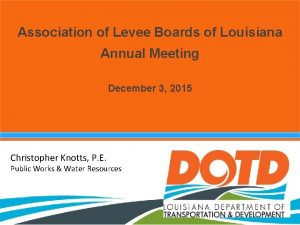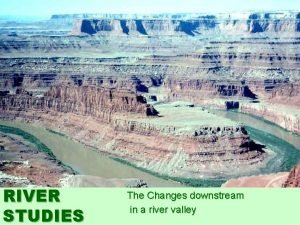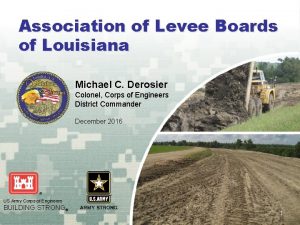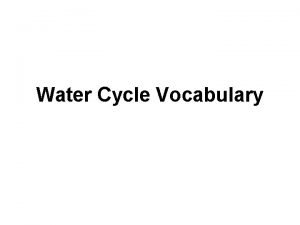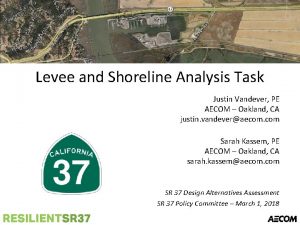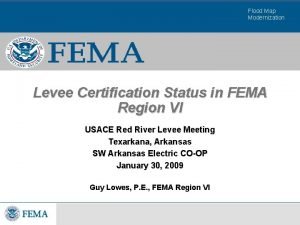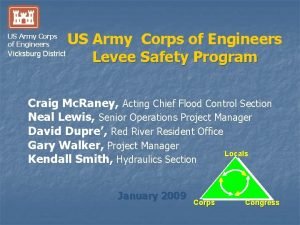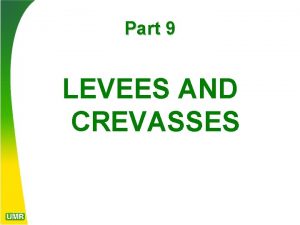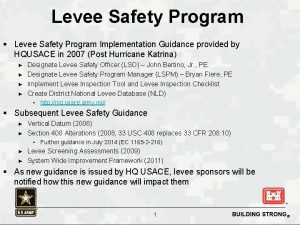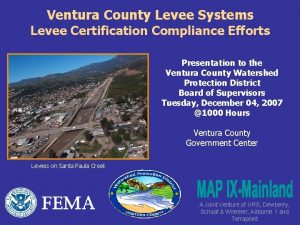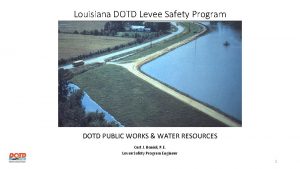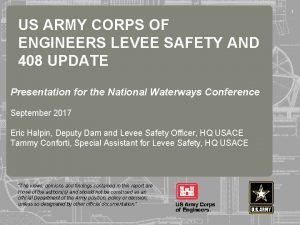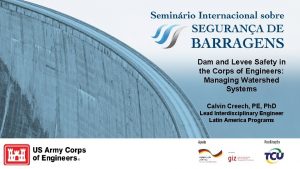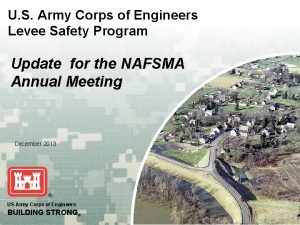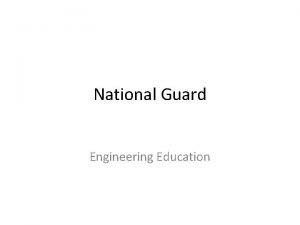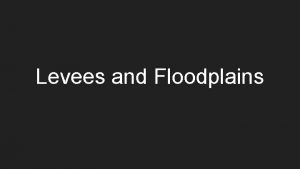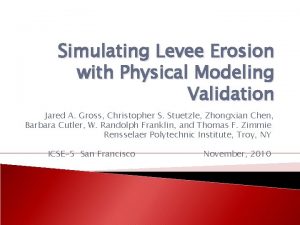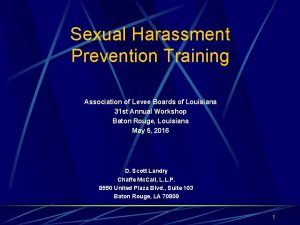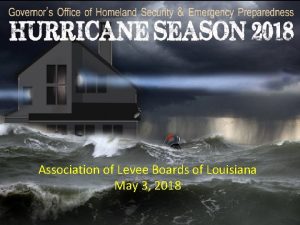Proposed National Levee Safety Program An Introduction for


















- Slides: 18

Proposed National Levee Safety Program An Introduction for the Tribal Assistance Coordination Group May 12, 2011 K 1

Presentation Overview • Background on Levees • Overview of the National Committee on Levee Safety • NCLS and Tribes

Background on Levees

What is a Levee? • Levees are an embankment, including floodwalls that provide protection from hurricane, storm and flooding related to seasonal high water, storm surges, precipitation and other weather events (includes canals not dams) • They play a critical role in protecting people, property, and other critical infrastructure – reducing risk but don’t eliminate it

Levees Today: No National Levee Safety Standards • Many levees were designed for one purpose now serving another • There are no national levee construction, maintenance, or inspection standards • Levees are an integral part of a flood risk reduction system – but most have not been built that way

Levees Today: What We Know and Don’t Know • • They are prevalent – in every state, numerous counties, and about 40 Native American communities based on current data We do not know how many miles of levees there are, their location or their Non-Federal condition = ? ? Other Federal Corps Program Levees

Levees & Tribal Lands

Levee Failures Can Have Serious Consequences • • 1993 Midwest Floods 1997 California Central Valley 2005 Hurricane Katrina 2008 Hurricane Gustav Missouri River, 1993 New Orleans, 2005 Houma Community, 2008

National Committee on Levee Safety

National Committee on Levee Safety – Established in 2008 “The committee shall develop recommendations for a National Levee Safety Program, including a strategic plan for implementation of the program. ” • Multidisciplinary: Engineering, Law, Public Administration, Business, etc. • Diversity of Interests: Primarily non-federal composition, supported by USACE and FEMA • Reaching Beyond the Committee: External Review of Recommendations and planned Stakeholder Involvement

Vision for Levee Safety in the U. S. An involved public and reliable levee systems working as part of an integrated approach to protect people and property from floods.

Working Themes • Focus on existing levees • Shared responsibility from individuals and government requirement for success • Levee safety is part of a larger flood risk management context • Education and communication are key to success

Recommendation Highlights • National Levee Safety Program governance and state and tribal levee safety programs • Creating a national inventory of levees • Environmental protection (including cultural resources) & levee safety • The National Levee Rehabilitation, Improvement, and Flood Mitigation Fund • Require risk-based flood insurance • Liability concerns related to levees

NCLS and Tribes

Tribal Involvement in Committee Efforts • Tribes and Nations solicited to provide representatives for the Committee – Unable to commit resources needed for full involvement given significant level of effort anticipated • Tribal representatives participated in technical review team – Confederated Salish & Kootenai Tribes, Flathead Indian Reservation, Montana – Seminole Indian Tribe of Florida • New call for tribal representatives to join the Committee – Someone with knowledge/experience with levee safety issues – Willing and able to commit time to the work of the Committee – Not a spokesperson for all tribes!

Tribal-related Activities to Date • Working with a federal tribal advisory group to provide input on a tribal engagement process – What tribes are interested/impacted? – What are tribal concerns related to levees? – How should tribes be engaged in a National Levee Safety Program? • Conducted tribal outreach sessions in Sacramento in October 2010 as part of broader outreach sessions • Conducted a Tribal Informational Webinar in March 2011 – Getting good feedback on tribal concerns and interests in levees – Beginning to develop community of interest

Additional Opportunities for Tribal Input • Will have a tribal breakout session at the Committee’s stakeholder meeting in Montana this summer • Will be at the National Tribal Environmental Conference in August • Planning to be at other tribal events this fall

Thank You Learn More at: www. leveesafety. org For Questions or To Express Interest, Send an Email to: contact@leveesafety. org
 National levee database
National levee database Association of levee boards of louisiana
Association of levee boards of louisiana Formation of a levee
Formation of a levee Ken guidry levee
Ken guidry levee How is the water cycle a continuous process
How is the water cycle a continuous process Levee
Levee Fema levee certification
Fema levee certification Levee
Levee Elle s'est levé ou levée
Elle s'est levé ou levée Levee design
Levee design Levee en masse pronunciation
Levee en masse pronunciation Monash abroad study plan
Monash abroad study plan Kontinuitetshantering i praktiken
Kontinuitetshantering i praktiken Typiska novell drag
Typiska novell drag Tack för att ni lyssnade bild
Tack för att ni lyssnade bild Ekologiskt fotavtryck
Ekologiskt fotavtryck Shingelfrisyren
Shingelfrisyren En lathund för arbete med kontinuitetshantering
En lathund för arbete med kontinuitetshantering Adressändring ideell förening
Adressändring ideell förening

